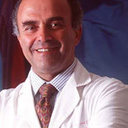Reduced testosterone levels in cluster headache: a stress-related phenomenon?
Maneno muhimu
Kikemikali
The circadian changes in testosterone (T) and cortisol secretion and morning luteinizing hormone (LH) levels were evaluated in nine episodic cluster headache (CH) patients in active phase and in seven healthy volunteers, with collection of blood samples every 2 h for 24 h. CH showed a significant reduction of the 24-h integrated mean T value (mesor) (4.4 + 1.1 ng/ml; chi +/- SD) in comparison with controls (6.6 +/- 0.8 ng/ml) (P less than 0.01). Both groups had plasma T circadian rhythm with peak values in early morning, but in CH single cosinor analysis showed its absence in three out of nine CH patients. The rhythm showed an acrophase delay of 101 min in CH. Both patients and controls had a significant circadian rhythm of plasma cortisol concentration. CH patients, however, showed an acrophase delay of 106 min and significantly increased concentrations from 1200 h to 2000 h. Morning LH values were similar in the two groups. The reduced secretion of plasma T in CH patients in the active phase coexisted with an acrophase delay of its circadian rhythm. A similar delay was found in 24-h plasma cortisol levels. We suggest that stress accompanying attack expectancy in the active phase is the mechanism behind the elevated plasma cortisol levels. This in turn could reduce T concentrations, acting at the testicular level. These disturbances in internal chronoorganization support the hypothesis that cluster headache is basically a dyschronic disorder.


